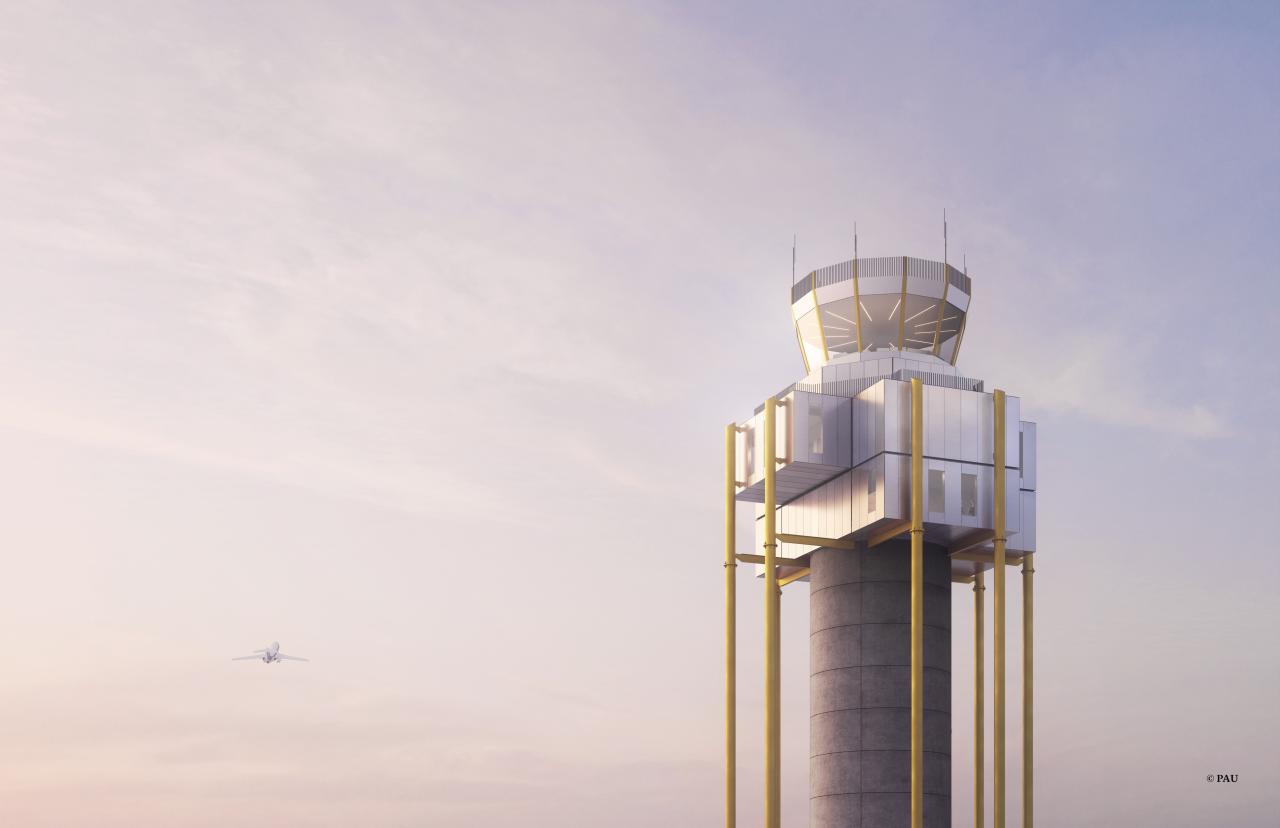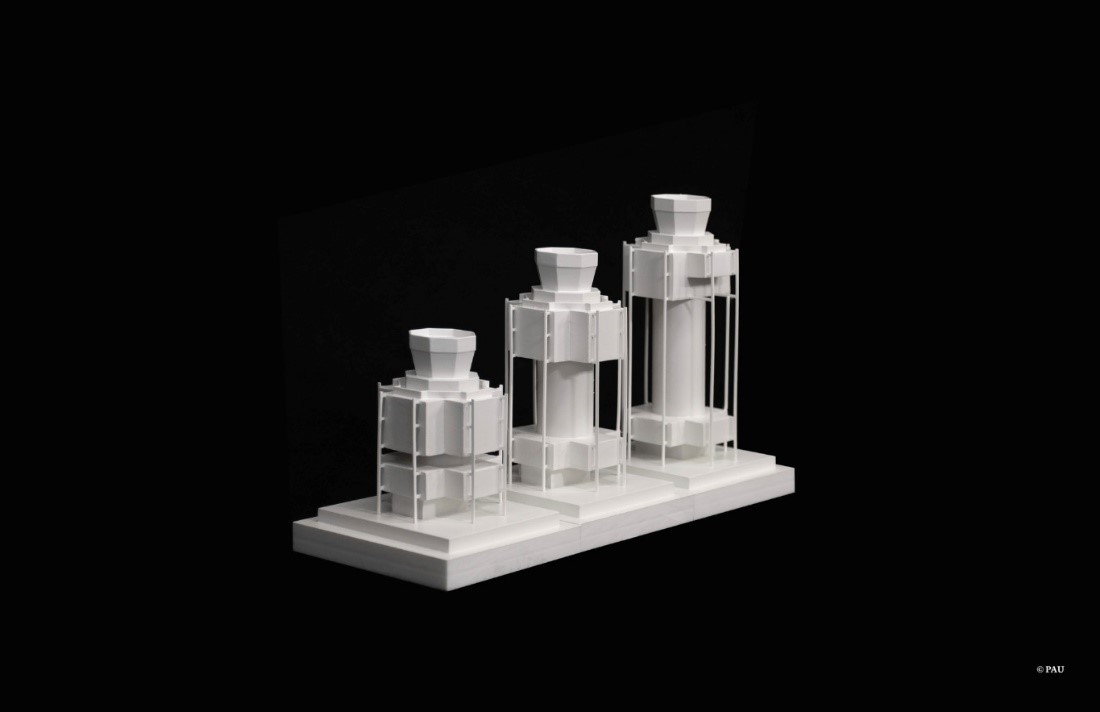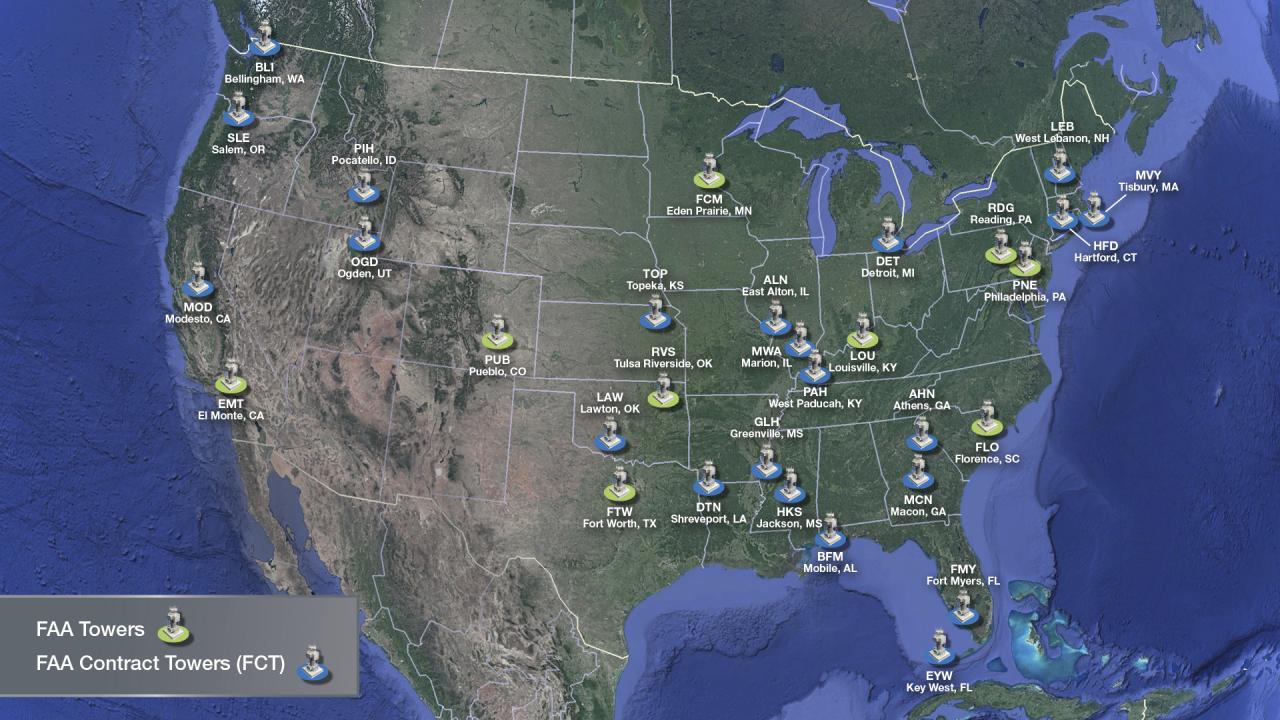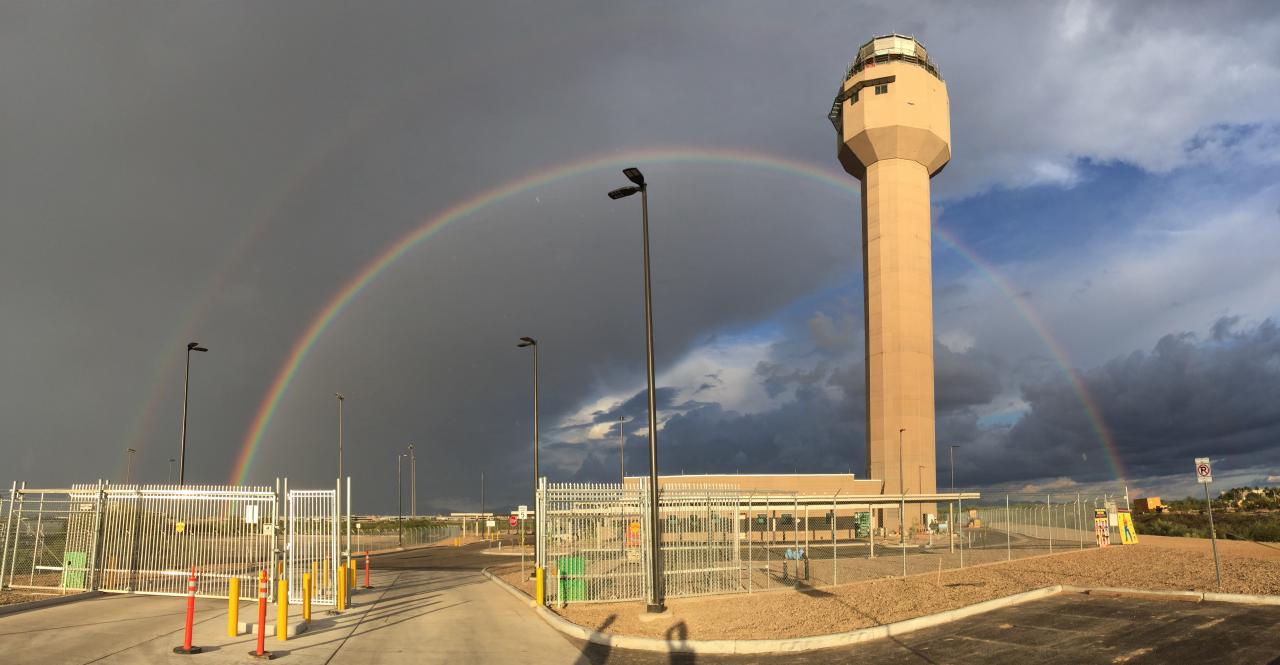Tower Design Initiative
After a nationwide solicitation, the FAA has selected a design by Practice for Architecture and Urbanism (PAU) of New York for new airport traffic control towers at many municipal and smaller airports across the United States. The adaptable design meets key requirements including:

 All-electric building systems
All-electric building systems- Materials and products free from chemicals known to pose health risks
- Thermally efficient façade
- High-recycled steel and metal products
- Renewable mass timber when usable
- Ground-source heating and cooling in some environments
The FAA’s preferences included that the design have standardized elements to reduce construction and operational costs while allowing for the building to be tailored to local climate and location issues such as very high and very low temperatures, wet and dry environments, and high winds. PAU's standardized yet highly flexible design can adjust the tower height to meet specific airport traffic and sightline requirements, allow for customizable colors and materials to meet the needs of the individual communities, and prioritize the health and wellness of air traffic controllers through its interior systems.
 The initial set of 31 control towers at candidate airports (pg. 664) would replace towers that are functioning beyond their intended design life. The towers will range in height from 60 to 119 feet. The FAA has set aside more than $500 million from the Infrastructure Investment and Jobs Act to support site evaluation, preparation, and early construction activities.
The initial set of 31 control towers at candidate airports (pg. 664) would replace towers that are functioning beyond their intended design life. The towers will range in height from 60 to 119 feet. The FAA has set aside more than $500 million from the Infrastructure Investment and Jobs Act to support site evaluation, preparation, and early construction activities.
The FAA issued a notice for the Final Programmatic Environmental Assessment (PEA) and Finding of No Significant Impact/Record of Decision (FONSI/ROD) for the Infrastructure Investment and Jobs Act-funded Airport Traffic Control Tower Replacement Program at airports across the nation. The Final PEA considers the conditions and potential environmental impacts from the Proposed Action to replace numerous FAA-owned ATCTs under the IIJA-funded ATCT Replacement Program. It also analyzes the potential environmental impacts that may result from construction and operation of the proposed new towers and decommissioning and removal of the existing towers. The Final PEA reflects consideration of comments received during the public comment period for the Draft PEA, which was open June 28, 2023 through July 31, 2023.
The Final PEA and FONSI/ROD are available here. The first groundbreaking could begin in 2024.
Tower Design Legacy
The FAA used a similar approach when it invited architectural firms to develop a modular design concept for new control towers. The agency ultimately selected a proposal from the company headed by rising architect I.M. Pei. Several of the 16 Pei-designed towers—including at Chicago O’Hare, Sacramento, Madison, and Jacksonville international airports—are still operating today.
Background on Airport Traffic Control Towers
 The FAA currently maintains more than 200 regional and municipal ATCTs across the U.S., many of which are due for replacement.
The FAA currently maintains more than 200 regional and municipal ATCTs across the U.S., many of which are due for replacement.
By adopting an innovative design and streamlined construction approach to build a large number of new regional and municipal ATCT over a short period of time, the FAA may allow for the cost-efficient replacement of outdated facilities where the tower cab height can be adjusted to accommodate operational line-of-sight and other safety requirements.
